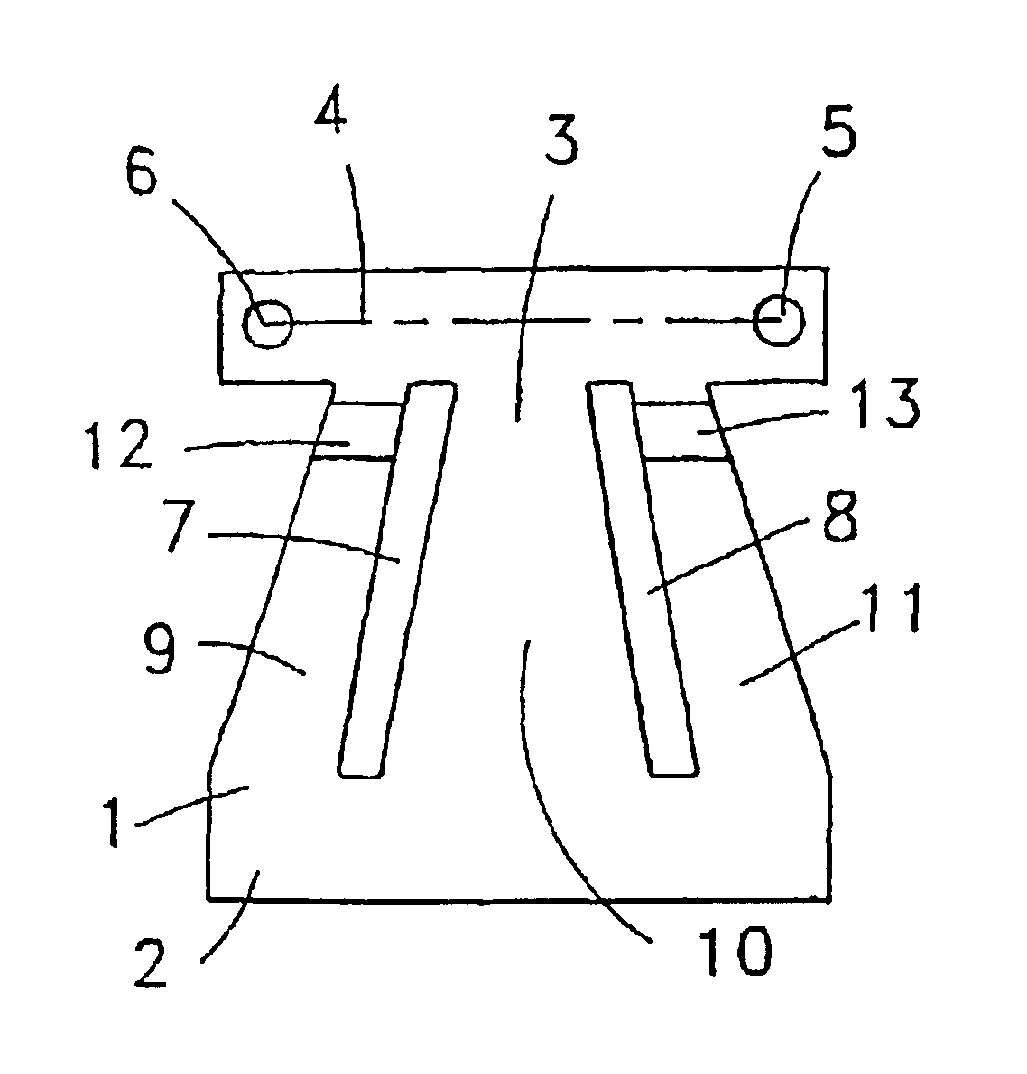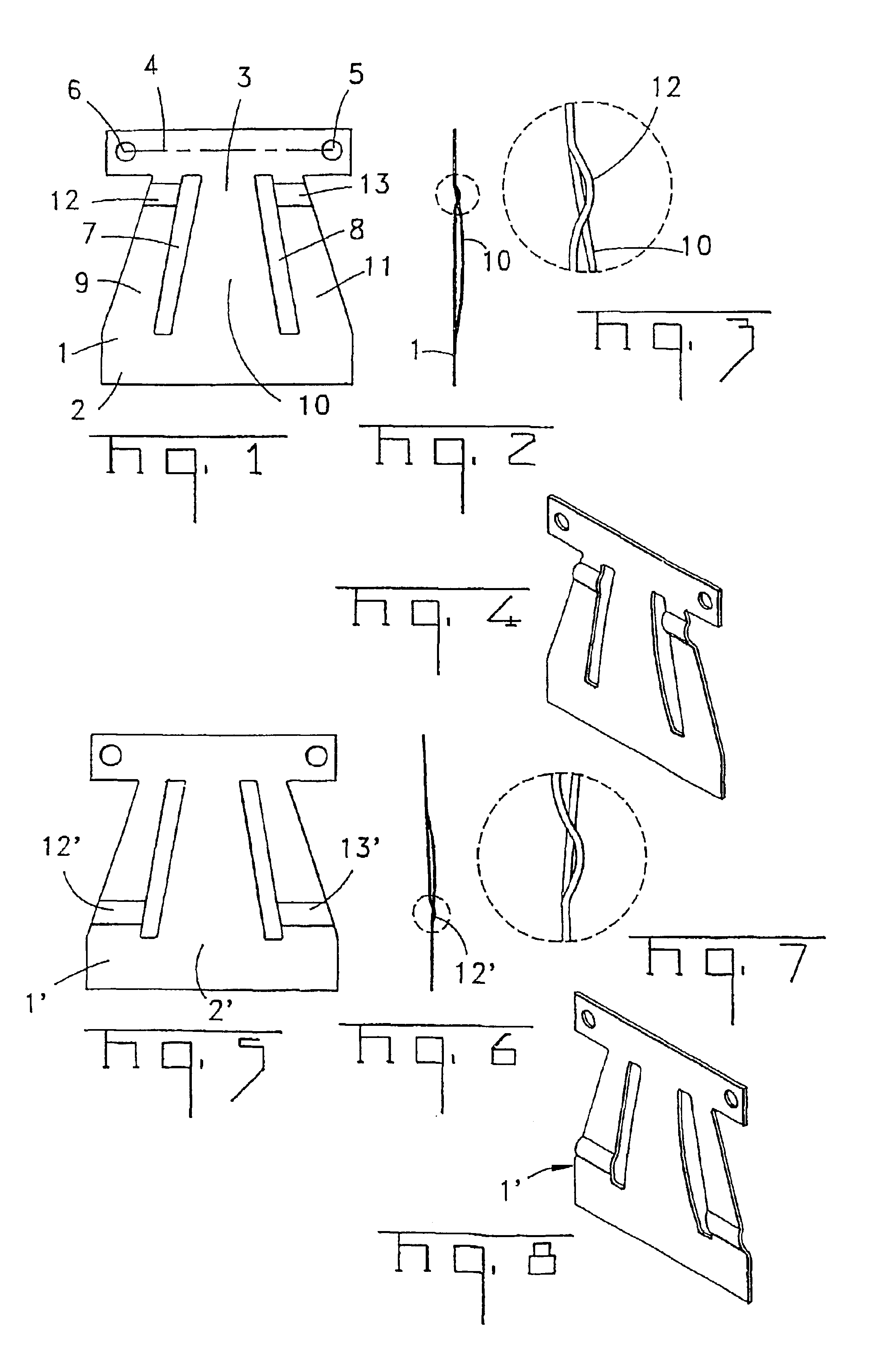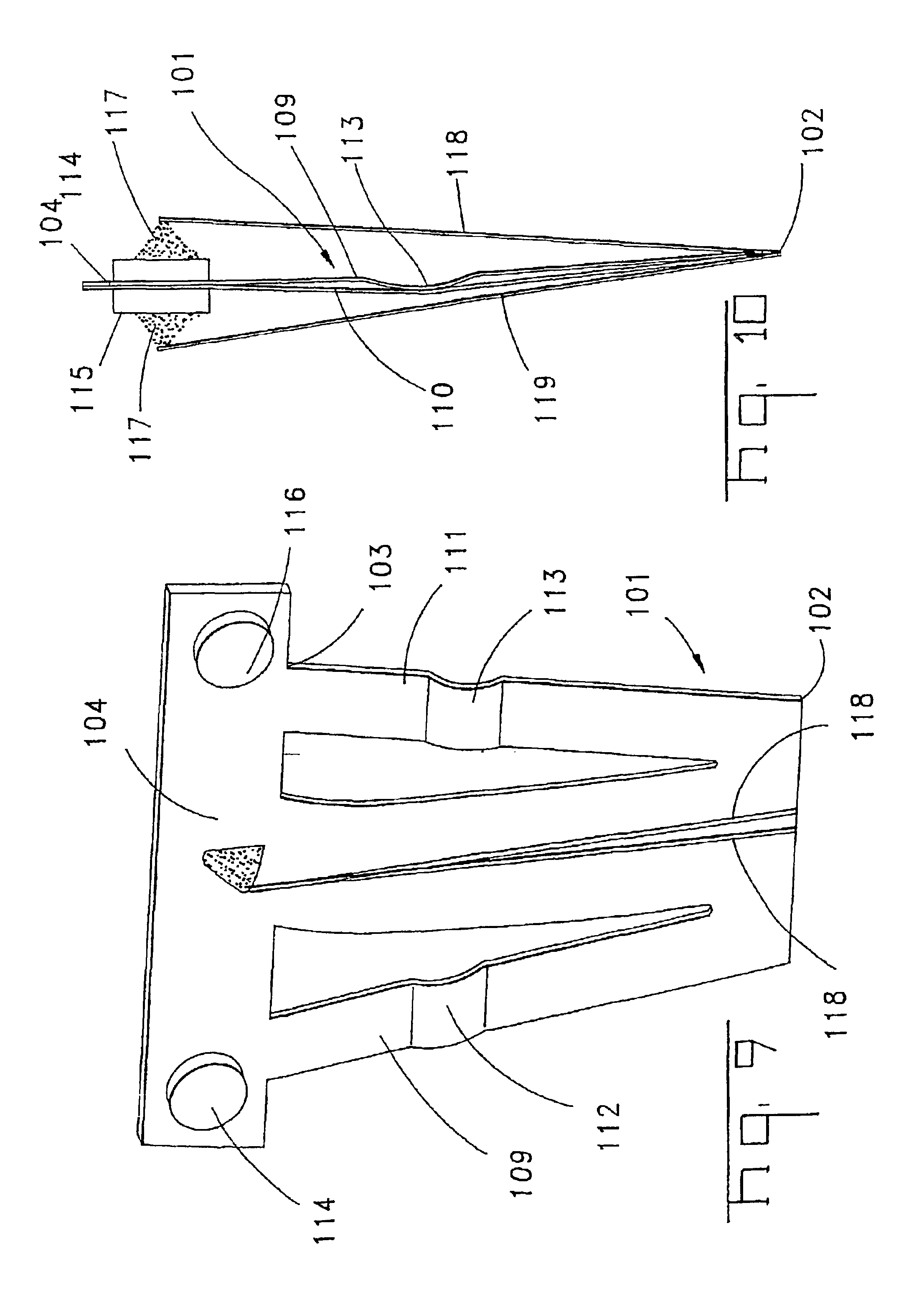Bistable electric switch and relay with a bi-stable electrical switch
a bi-stable, electric switch technology, applied in the direction of relays, snap-action arrangements, protective switch details, etc., can solve the problems of additional drive elements and extremely complicated spring construction
- Summary
- Abstract
- Description
- Claims
- Application Information
AI Technical Summary
Benefits of technology
Problems solved by technology
Method used
Image
Examples
first embodiment
[0043]FIGS. 1 to 4 show a spring for a bi-stable electric switch according to the invention. Spring 1 is a bi-stable nonlinear snap-action spring that is configured as a trapezoid. It has a wide side 2 as well as a narrow side 3. Again arranged on the narrow side 3 is a carrier strip 4 to which the contact elements are also secured on the regions 5 or 6 by riveting or welding.
[0044]The spring is subdivided into three plates 9, 10 and 11 by means of two oblique elongated slots 7 and 8. The plates 9, 10 and 11 are connected to one another at their ends. The lateral plates 9 and 10 are plastically deformed as a result of bending by means of a crimp 12 and 13. The crimp is located near the narrow side 3 of the trapezoidal spring. Because of the crimps 12 and 13, the plates 9 and 11 are shortened and as a result exert a pressure on the middle plate 10. The plate 10 relieves the pressure as it bulges to one side. This can be seen particularly clearly in FIG. 2. The position of the crimp i...
third embodiment
[0048]A trapezoidal spring 101 is also shown in the third embodiment shown in FIGS. 9 and 10; it is, however, rigidly fixed with its narrow side 102. A carrier strip 104 is located on its wide side 103 and carries the contact elements 114, 115 and 116. The trapezoidal spring 101 also has a middle plate 110 as well as two lateral plates 109 and 111 that are in each case shortened by means of a crimp 112 and 113.
[0049]There is a short lever arm 117 on the carrier strip 4 on each side. A wire 118 and 119 is sometimes secured to this. If a current flows through such a wire 118 or 119, the wire heats up and as a result enters into its second shortened phase. Because of this shortened phase the carrier strip 114 is then tilted and this tilting causes the bulge of the middle plate 110 to snap over from one side to the other side and as a result the trapezoidal spring 101 is transferred into its second stable final state.
[0050]Although the heating occurring when the current flows through th...
PUM
 Login to View More
Login to View More Abstract
Description
Claims
Application Information
 Login to View More
Login to View More - R&D
- Intellectual Property
- Life Sciences
- Materials
- Tech Scout
- Unparalleled Data Quality
- Higher Quality Content
- 60% Fewer Hallucinations
Browse by: Latest US Patents, China's latest patents, Technical Efficacy Thesaurus, Application Domain, Technology Topic, Popular Technical Reports.
© 2025 PatSnap. All rights reserved.Legal|Privacy policy|Modern Slavery Act Transparency Statement|Sitemap|About US| Contact US: help@patsnap.com



